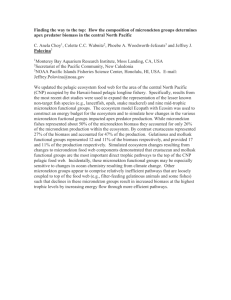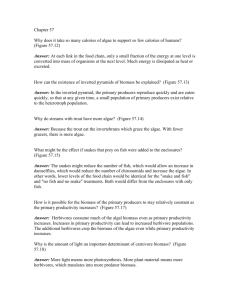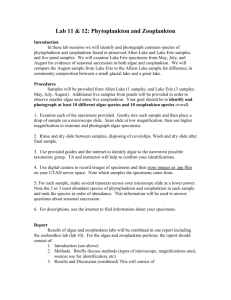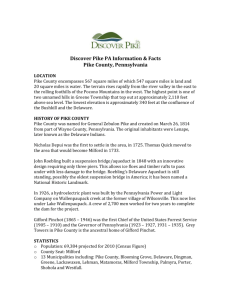environmental systems test 1
advertisement
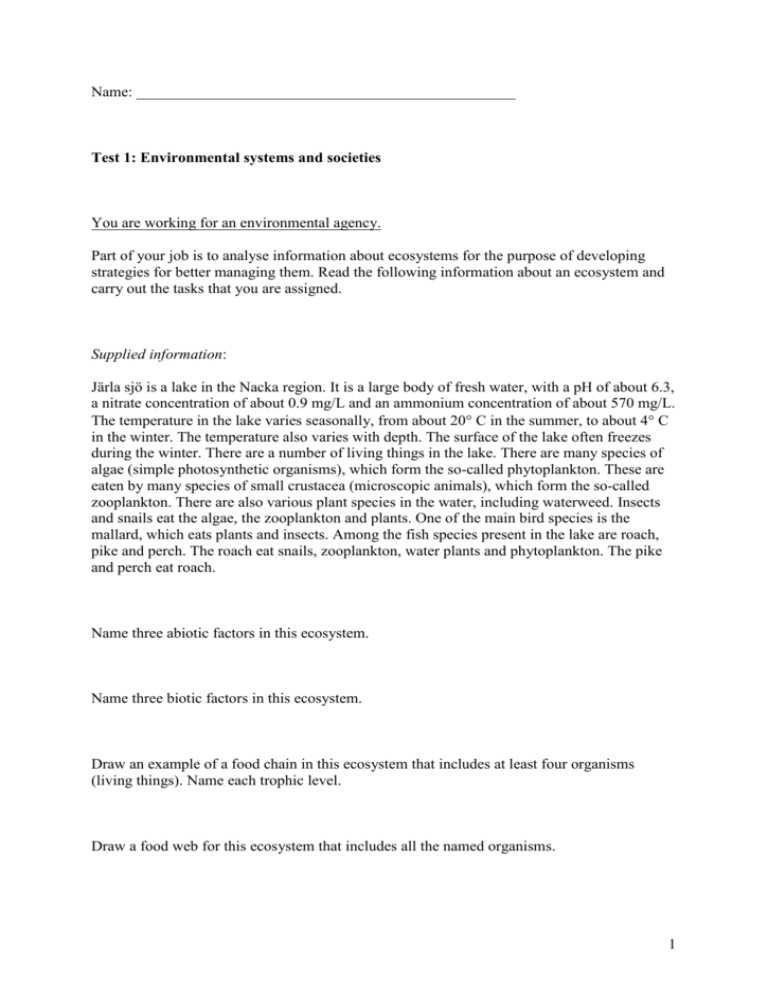
Name: _________________________________________________ Test 1: Environmental systems and societies You are working for an environmental agency. Part of your job is to analyse information about ecosystems for the purpose of developing strategies for better managing them. Read the following information about an ecosystem and carry out the tasks that you are assigned. Supplied information: Järla sjö is a lake in the Nacka region. It is a large body of fresh water, with a pH of about 6.3, a nitrate concentration of about 0.9 mg/L and an ammonium concentration of about 570 mg/L. The temperature in the lake varies seasonally, from about 20 C in the summer, to about 4 C in the winter. The temperature also varies with depth. The surface of the lake often freezes during the winter. There are a number of living things in the lake. There are many species of algae (simple photosynthetic organisms), which form the so-called phytoplankton. These are eaten by many species of small crustacea (microscopic animals), which form the so-called zooplankton. There are also various plant species in the water, including waterweed. Insects and snails eat the algae, the zooplankton and plants. One of the main bird species is the mallard, which eats plants and insects. Among the fish species present in the lake are roach, pike and perch. The roach eat snails, zooplankton, water plants and phytoplankton. The pike and perch eat roach. Name three abiotic factors in this ecosystem. Name three biotic factors in this ecosystem. Draw an example of a food chain in this ecosystem that includes at least four organisms (living things). Name each trophic level. Draw a food web for this ecosystem that includes all the named organisms. 1 Name an organism in this ecosystem that exists at more than one trophic level. Draw two food chains that include this organism and in which it is at different trophic levels. State an example of a factor that could be operating as a limiting factor in a lake such as this one. Another part of your job at the environmental agency is to present information about the environment to the public. Supplied information: A research team have been collecting data about a number of lake ecosystems in Sweden. With this data, they have drawn pyramids of numbers, biomass and productivity. You are to present their findings at a press conference to the world’s media. So that the assembled journalists can better understand the charts, you should first explain some of the important concepts. Do this, by answering some of the following questions. Describe the similarities and differences between pyramids of numbers, biomass and productivity. Supplied information: The following data describes a food chain in one lake. Organism Biomass 15 800 kg Algae 980 kg Zooplankton 950 kg Roach 8 kg Pike 2 Use the data to draw a pyramid of biomass. The journalists note that there is only a small biomass of pike, despite the biomass of the algae being many thousands of times greater. Explain why thousands of kilograms of algae are needed to support just a few kilograms of pike. Supplied information: In one lake, a small amount of a new pesticide has been identified. The pesticide is present in the water at a level of 0.000 01 mg/L. The pesticide is present in living things at the following levels: Organism Level of the pesticide (mg pesticide/kg biomass) Algae 0.001 Zooplankton 0.01 Roach 0.1 Pike 1 Explain this data to the press, using the terms bioaccumulation and biomagnification. Explain to the press the difference between the terms population and community. 3
